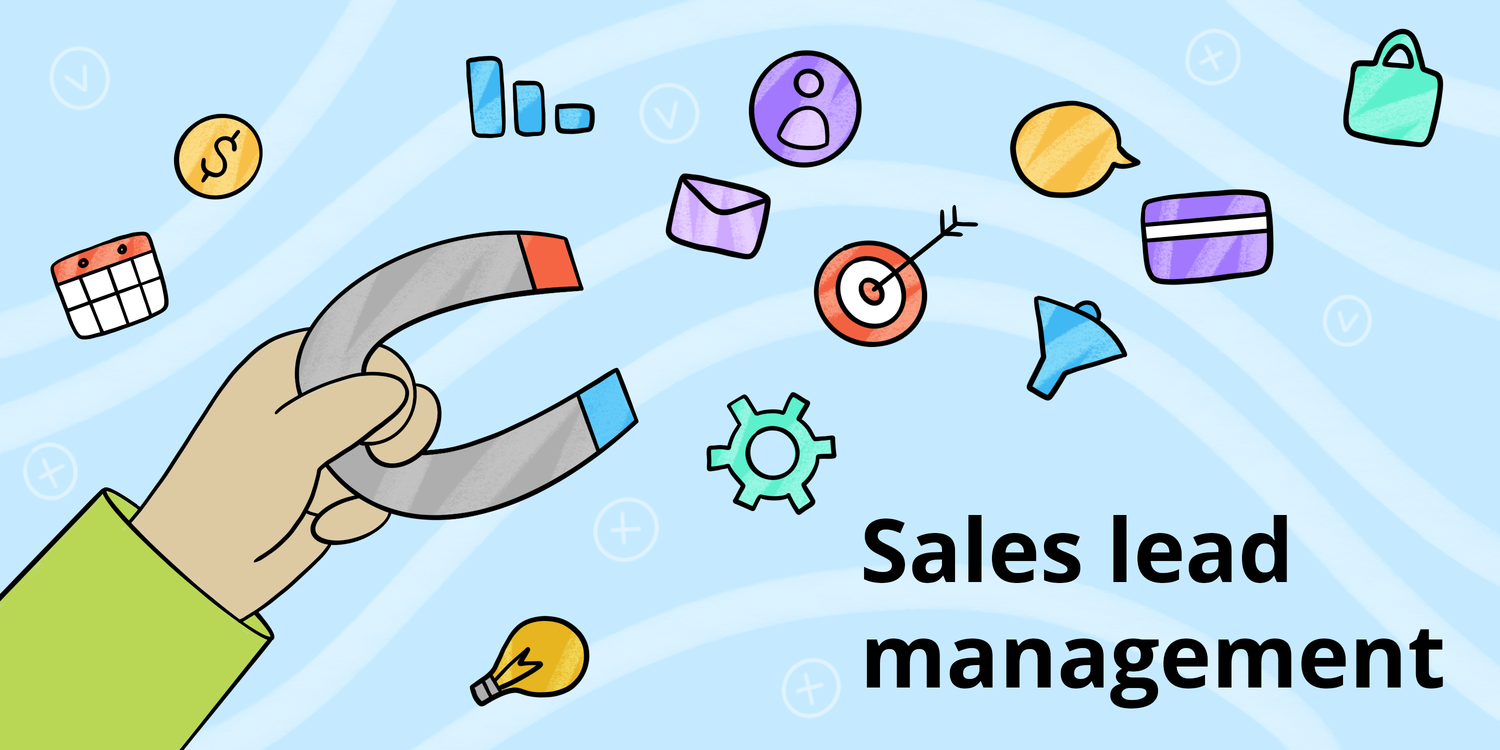A sales lead is a person or a business entity that could be your potential customer. These leads come with data that helps differentiate them from their peers, making sales lead management imperative. They will become clients with proper nurturing and a marketing strategy to move them further down the sales funnel.
But first, the company needs to come up with a lead generation strategy. Lead generation, after all, is the sum of marketing actions that spark curiosity and turn strangers and fly-bys into interested potential customers. A social media post, for example, with proper social media tags, a genuine hook, or a lead magnet can boost lead generation and keep you on top of your prospects’ minds.
Is a sales lead the same as a sales prospect?
The answer would be no. A business’ marketing and sales teams will need to examine the leads and see their potential.
Outline
Sales lead management and lead qualification
Conversion starts with defining your ideal customer. Some things to consider when doing so would be:
- Social media platforms they frequent
- Marketing channels they love (SMS marketing, email marketing, etc.)
- Their goals and pain points
- What entices them
- The problem your product or service can solve for them
- The budget they can spend on personal expenses
- How all of the above fits into your brand’s goals and aspirations
After answering those questions, you’re ready to proceed with lead qualification.
Now, lead qualification is the process of grouping leads based on how and why they are qualified and their stage in the sales funnel, their journey, and, eventually, whether or not they can give you a good conversion rate and boost your ROI.
So, what are the different lead categories?
Lead type based on qualification
Product qualified leads (PQL)
Think of customers who are using the free version of your product, perhaps those who have gone through the free trial and seem interested in completing the purchase. PQLs usually engage with customer service teams, asking for features and giving feedback on the reason they’re not paying clients yet.
PQLs could be a little tricky to identify and master, though. A person interested in purchasing from your brand isn’t something new.
Let’s say you have an eCommerce store that sells high fashion and luxury products. There could be people coming in every day for free samples, asking when you’re putting up items for sale. This doesn’t mean they’re going to buy.
So, you might need to take some demographic and psychographic data into account and see which traits of your PQLs match those of your clients.
Marketing qualified leads (MQL)
An MQL is a person who has shown interest in your marketing actions. However, they’re not ready for your sales pitch yet.
Let’s assume a person interacts with your marketing content — an ebook that you use as a lead magnet, a PPC ad, or a quiz you’ve created. Depending on their preferences, clicks, and interactions with social media posts, the marketing team will determine if they’re qualified or not. And after that, the sales team will take over.
The objective here is to nurture an MQL enough to become an active customer. However, this is determined by the marketing team and then is passed down to the sales team. And after that comes …
Sales qualified leads (SQL)
… a sales qualified lead who actively wants to make a purchase. Their qualification can happen over a call or live chat with a member of your company’s sales team.
During this process, sales reps can discover and decide which customers are worth pursuing and which are there as fly-bys.
SQLs can boost your bottom line and save your sales team a lot of time and energy, especially when you’re first building your brand and distributing your budget with frugality amongst your teams.
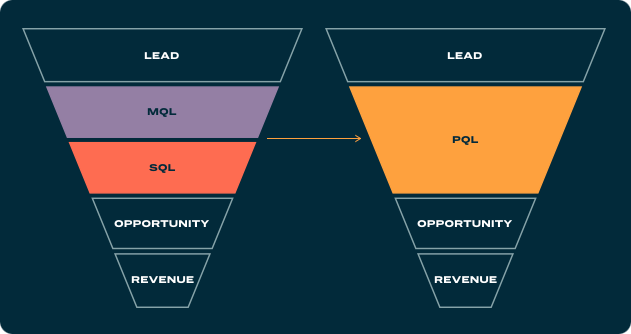
Lead type based on the interest
Cold vs. warm leads
Now, we’ve all been cold leads at some point in time, especially when receiving sales calls. The company calling you has no idea if you’re interested in buying — sometimes they have no idea whether you’re qualified to buy either — and they rarely have a lucrative deal to offer you.
But what are warm leads?
A warm lead is a lead who has shown some interest by interacting with your brand. They’ve probably signed up to receive sales or marketing calls, or they’ve interacted with you on social media. Maybe they’re a referral, or they’ve messaged you on some platform.
Either way, the main difference between cold and warm leads is their intent and whether they’re interested, not their level of interest per se.
Of course, lead qualification is only one thing, and sales lead management can be a competitive sport. So, how are you going to ace it?
Read on!
How to improve the sales lead management process?
The first thing you’ll need to do would be to create a lead management workflow that will consist of the following:
- Lead capture methods
- Lead tracking
- Lead scoring and distribution
- Lead nurturing and closing the sale
Let’s dive in.
Capturing leads
There are plenty of tactics you can use to capture leads, especially due to the abundance of marketing tools of today:
1. Email marketing
Email marketing is one of the best ways to generate leads. First of all, many organizations are now trying to secure their phone systems against robocalls, only accepting calls from those who have contacted them earlier. The only chance to get in touch with someone you need is via email, and most internet users opt to receive all kinds of commercial information by email, too.
It’s one of the most cost-effective and easy-to-track lead gen channels, and it’s considered one of the most valuable as well:
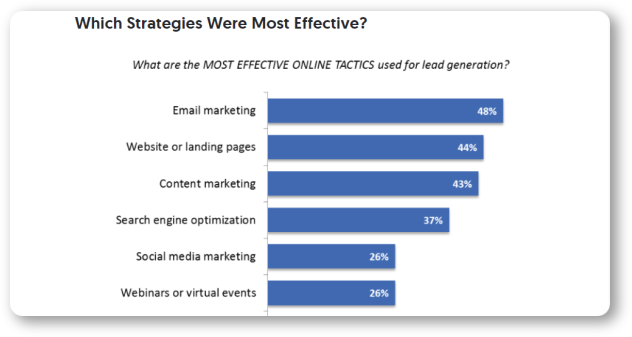
Generally speaking, it’s much more profitable to build an email list and ask your subscribers whether they’d like to move forward with some marketing action.
And you can find a lot of tools that help automate this process and relieve you from tedious work. For example, Snov.io automates the whole lead generation process and enables you to leverage the full potential of your email list in the fastest and most efficient way.
Here you’ll get leads from any website or social media with Email Finder and create a list of highly-targeted leads. Then you can control the quality of your email list with Email Verifier and launch personalized Email Drip Campaigns on the same platform.
As a result, you can pay more attention to incredible content creation and data analysis rather than wasting it on the process of sending emails.
Meanwhile, the tool will take care of laser-focused segmentation and A/B testing of your subject lines to grab your lead’s attention. You see, in the era of data, customers are wary of seeing the “Hey, John Doe!” personalization headline unless they know that opening that email will offer them a unique value proposition.
2. Landing page
Another way to grab a user’s attention and turn them into a lead is a landing page. It can complement any other marketing activity and is a standalone page with one objective: to convert.
So, whether you use email marketing, social media marketing, or other marketing channels, you can always link your CTA to your landing page, pack it with tailor-made content that will speak directly to your prospects, and watch them turn into leads.
3. Referral marketing
The next one is probably the oldest sales technique: referral marketing. Creating a referral program can bring you more traffic and leads by exposing your content and brand to more people. Just make sure to offer an incentive to existing customers who will refer a friend.
Also, the numbers don’t lie:
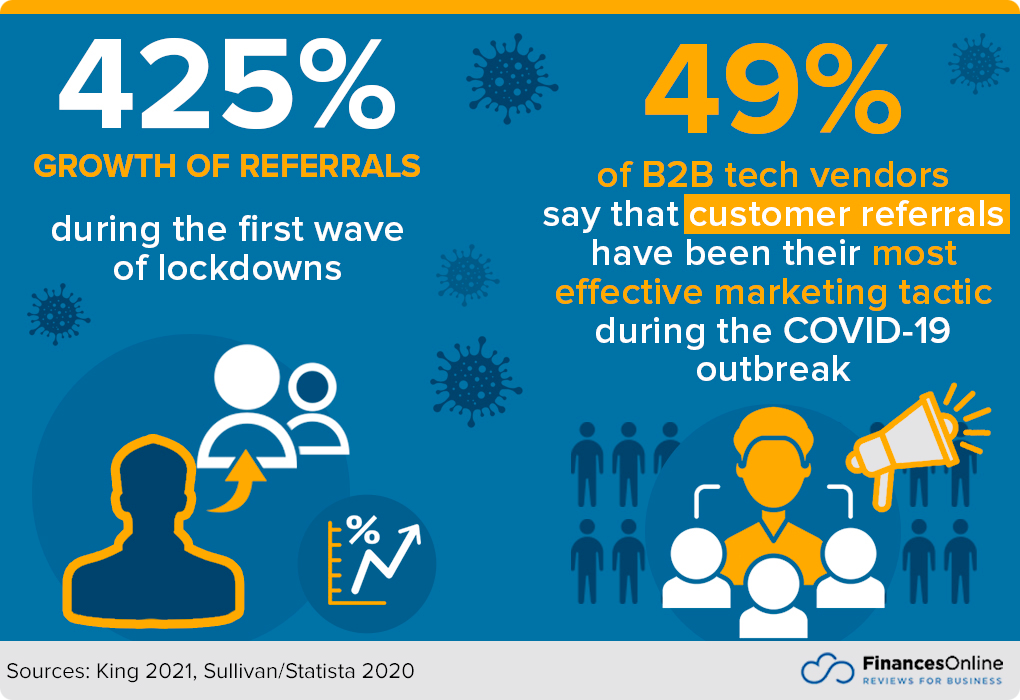
Not to mention how this generation of consumers relies on recommendations more as compared to older generations.
3. SEO, blog posts, and webinars
Another way to generate and then qualify leads is by driving more traffic to your website, using the following techniques: SEO, blog posts, and webinars.
SEO will give you organic traffic by boosting your online presence. Research keywords your prospects love and the ones your competitors use frequently, build your blog posts around them, and keep a consistent schedule.
A blog post is another page for Google to index and for your prospects to discover. This will build a buzz around your name and boost your brand awareness.
And so will webinars. They are another lucrative offer of valuable content. Simply create a webinar presenting your product as a solution for users and link it to a landing page to collect essential data. You’ll see how it can bring awareness and consideration, boost authority, and help you capture leads.
Tracking your leads
Capturing your leads will tell you a lot about who you’re dealing with. After all, leads are individuals with different habits and needs. The more you know about them, the better you’ll be able to segment them.
Here are the mysteries you need to solve in regards to your lead qualification process:
- Where did your leads come from? This will help you understand what channels work best for you, what brings you more website traffic, and how to analyze your prospects’ behavior on your website. It will also help you identify leads that are ready to purchase.
- What are their characteristics? Answering this question will show you how to create content that stems from your leads’ wants and needs. Create buyer personas and use AI and machine learning tools to pinpoint segments. This way, you will find segments so small they’ll correspond to users on a one-on-one basis and create tailor-made content.
Tracking your leads can be conducted using tools like heatmaps. A heatmap can show you how a user interacts with your content by marking your webpage with different colors. This will give you a bird’s-eye view of your visitors’ behavior and help you make educated decisions regarding your sales strategy.
Of course, in sales lead management, tracking is nothing without a sales lead management software — a CRM solution. Some of the best CRM software for solopreneurs, entrepreneurs, and SMBs includes lead tracking options that can identify the customer’s stage in the sales funnel and even help you take advantage of any up- or cross-selling opportunities.
Generally speaking, with a CRM solution, you can store data, study your analytics, and distribute your leads to your teams in a way that makes sense. Let’s take Snov.io CRM as an example. What exactly will you get from using this software? Multiple pipelines, deal stage management, unlimited teamwork, deal and prospect notes, automated data capture with deal timeline, lead tracking using tags, and integrated email service (for free!).
Lead scoring and distributing
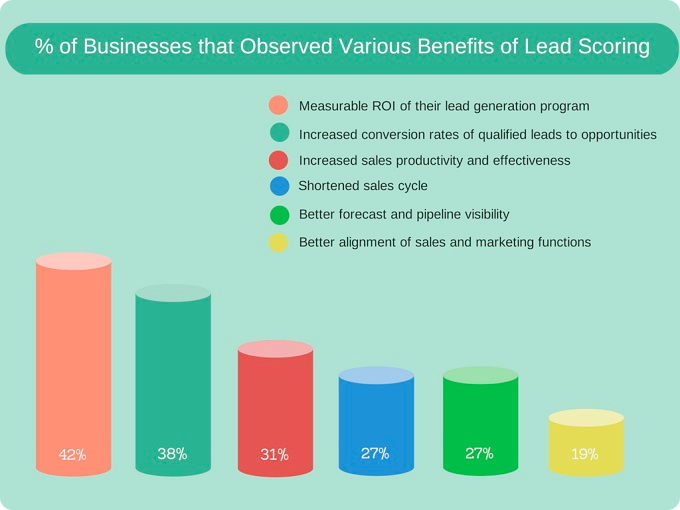
Lead scoring is, undoubtedly, one of the most beneficial processes of sales lead management.
After deciding whether your company needs lead scoring (some businesses are so small, or leads are so bad, you don’t need it just yet), it’s time to learn how to implement the tactic and use it to your advantage.
Firstly, you need to pinpoint the demographics, psychographics, and activity that will turn a user into an MQL. Some useful data could be:
- Industry
- Education level
- Job position
- Number of employees
- Time spent on your webpage
- Best-converting actions on the website
You can use your marketing automation software and access your analytics to see the rates and make sure you understand the actions that convert the best and the activity that matches your demographics. Like, how many forms and landing pages drew your leads’ attention, and how much did your content engage them?
After that, discuss with your sales and marketing teams and come up with your point system. Assign points for each action and add them up. The higher the score, the better for you; it means your lead is ripe and ready to proceed with a purchase.
Lead nurturing and closing the sale
If you have implemented the steps above correctly, this should be the easiest part of all. However, lead nurturing is where some businesses fail.
So, here are some steps that will help you nurture your leads and, eventually, close the deal.
Step 1
Start off by using the AIDA model.

It consists of all the stages a user goes through before proceeding with a purchase:
- First, grab their attention with tailor-made content, landing pages, and ads on the channels most of your users frequent.
- Then, spark their interest with a lucrative offer or create visuals, content, even blog posts that will be subtly talking about your brand.
- Your content should make leads desire your product. What is interesting about your product? What problems can it solve?
- Lastly, initiate action with actionable verbs in your CTAs. If you’re trying to nurture leads through a landing page, and your hook is gated content (for example, an exclusive case study), then urge them to verify their email address. Just use a double opt-in that will tell them exactly what their next step should be.
Step 2
After determining what a sales lead is, you can use email marketing campaigns to nurture and nudge users down the funnel in a seamless manner.
As mentioned before, to do that, you will need an email marketing platform with features such as free email templates, autoresponder software, and of course, AI and machine learning tools that will hook your audience.
Make sure to use sequences with dynamic content that will change according to your recipient and marketing messages that will always be relevant.
Personalization is of utmost importance in today’s sales lead management and qualification. You need to stand out in a user’s inbox, and to do that, ensure that you create marketing messages that are timely and relevant.
Step 3
Also, don’t be above social monitoring when it comes to crafting your marketing message. You can always track social media content that will spark interest and make users feel there’s a face behind the name.
Social monitoring is also helpful for understanding and implementing UGC, reviews, and surveys. When given feedback, you need to be able to use it to your advantage.
Showing your audience that you care enough to use their creativity for your content and take their needs and wants into account to better your presence and your product can be beneficial: you’re showing that you’re actively listening. Your brand wants to evolve with its audience.
Step 4
All of the above can help you close a sale, but nothing does the trick like FOMO and creating a sense of urgency.
When sending out your email campaigns, use countdown timers and power words like “Last Chance.” This is what we’d call a “fear power word,” and it can be pretty effective when trying to close your deals.

And never forget the power of data and analytics for a well-informed decision. Your lead qualification process and your sales lead management will go nowhere with guesstimates.
The takeaway
So, what is a sales lead? Does sales lead management take a toll on businesses if not done correctly? A sales lead can be anyone, and sales lead management is easy, especially if you score and qualify leads as well as you can.
Besides, never forget the power of personalized content and, if you’ve got an extensive list of leads, A/B testing. Just make sure to test one factor at a time and determine what works best for your audience.
Your sales and marketing team will get perfect scores on lead qualification and will thank you for it!
